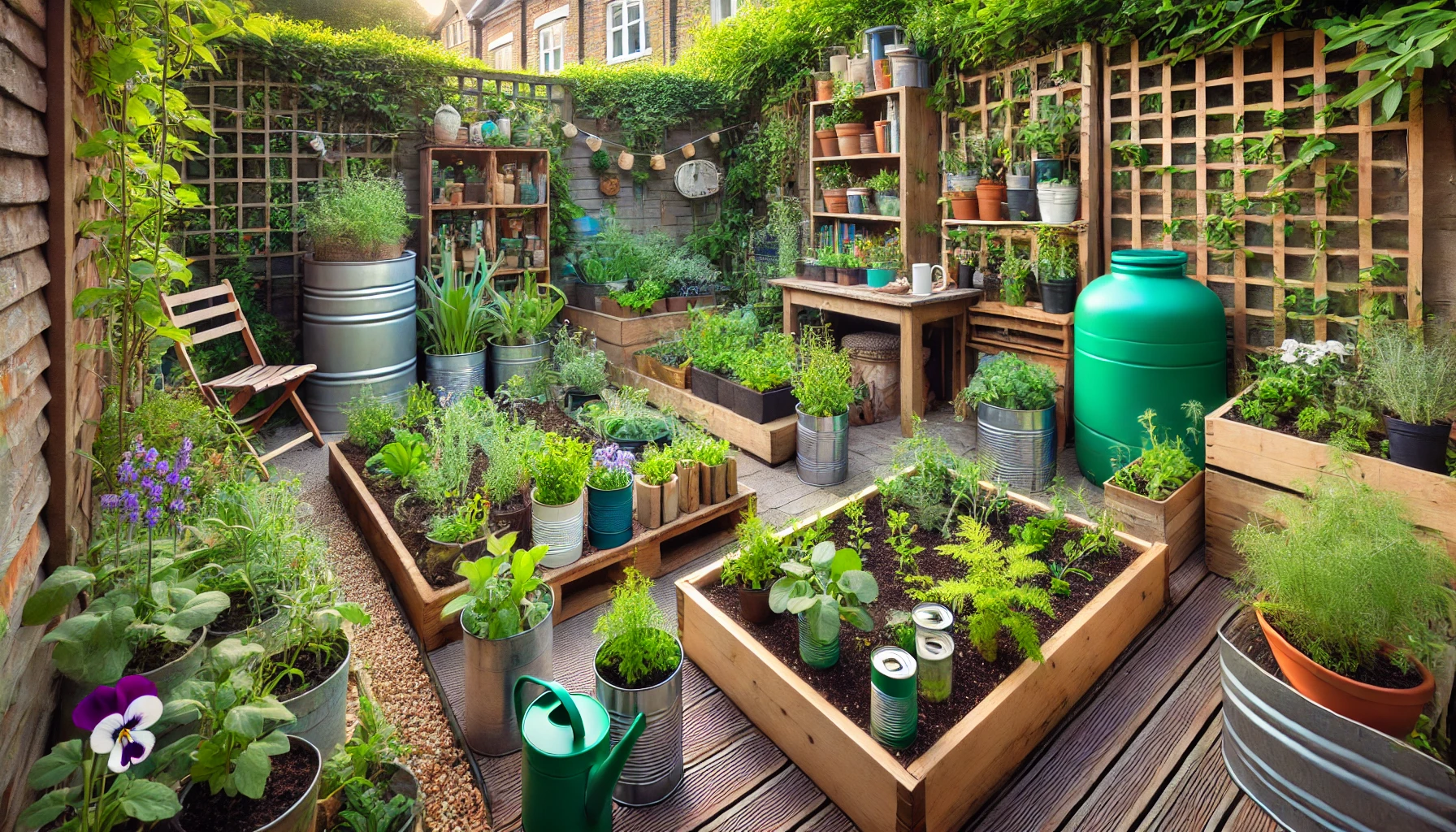Starting a home garden is an excellent way to grow your own food, improve the environment, and reduce your carbon footprint. A garden doesn’t need to be large or expensive to be sustainable. Whether you have a small balcony or a large backyard, there are plenty of ways to grow plants in an eco-friendly and budget-conscious way. In this article, we’ll explore practical tips for creating a sustainable, cost-effective home garden that benefits both you and the planet.
Start with a Plan: Understanding Your Space and Needs
Before you begin planting, it’s important to assess your available space and consider what you want to grow. Understanding your needs, the amount of sunlight your garden receives, and the local climate will help you make the best decisions for your garden. Start by asking yourself these questions:
- What do you want to grow? Vegetables, herbs, flowers, or a combination?
- How much sunlight does your garden get? This will determine the type of plants that will thrive in your space.
- What’s your budget? Setting a budget helps guide your decisions and ensures that you don’t overspend on garden supplies.
Choose the Right Plants for Your Climate
Selecting the right plants is one of the most important steps in creating a sustainable garden. Opt for plants that are well-suited to your local climate, as they will require less water and care to thrive. Here are some tips for choosing plants:
- Native Plants: Native plants are adapted to your region’s climate and soil, making them more resilient and easier to care for.
- Drought-Tolerant Plants: These plants require less water, making them ideal for areas with limited rainfall.
- Seasonal Plants: Growing seasonal plants means that you’ll always have something fresh to harvest, while also ensuring that your plants don’t use unnecessary resources during off-seasons.
Use Compost and Organic Fertilizers
One of the key principles of sustainable gardening is using natural, organic materials instead of synthetic chemicals. Composting and using organic fertilizers is an effective way to feed your plants while reducing waste and promoting soil health.
- Compost: Composting your kitchen scraps, yard waste, and other organic materials creates nutrient-rich soil that helps plants grow. It’s an eco-friendly way to recycle waste and improve the soil in your garden.
- Organic Fertilizers: Look for organic fertilizers made from natural ingredients such as bone meal, fish emulsion, or seaweed extract. These products provide essential nutrients to your plants without harming the environment.
Water Conservation Techniques
Watering is one of the most important aspects of gardening, and using water efficiently is crucial for both sustainability and cost-effectiveness. Here are some water-saving techniques:
1. Use a Rain Barrel
A rain barrel is an easy and effective way to collect rainwater for your garden. This reduces your reliance on tap water and helps conserve valuable resources. You can use the collected water to irrigate your plants during dry spells.
2. Water Early in the Morning or Late in the Evening
Watering your garden early in the morning or late in the evening helps prevent water evaporation due to the sun’s heat. This ensures that your plants receive more water and reduces the need for frequent watering.
3. Mulch Your Garden
Mulching your garden with organic materials such as leaves, straw, or grass clippings helps retain moisture in the soil, reduces evaporation, and keeps weeds under control.
DIY Garden Projects: Reuse and Repurpose
Creating a sustainable home garden doesn’t have to involve buying expensive materials. You can repurpose items you already have at home to create garden containers, tools, and decorations. Here are some ideas for DIY garden projects:
1. Repurpose Containers
Instead of buying new planters, repurpose old containers like tin cans, plastic bottles, or wooden crates. These can be easily transformed into stylish and functional garden pots.
2. Create a Raised Bed from Pallets
Old wooden pallets are great for creating raised garden beds. By repurposing pallets, you can save money and create an organized and productive garden space.
3. Make Your Own Plant Labels
Instead of purchasing plastic plant markers, make your own using recycled materials like popsicle sticks or old spoons. This is a simple, eco-friendly way to label your plants.
Maximize Vertical Space
If you have limited space for a garden, consider using vertical gardening techniques. Growing plants vertically not only saves space but also creates a beautiful, lush garden. Here are some ideas:
1. Vertical Planters
Use shelves, hanging planters, or wall-mounted containers to grow plants vertically. This method is perfect for small spaces like balconies, patios, or even indoors.
2. Climbing Plants
Climbing plants like peas, beans, or cucumbers can be trained to grow on trellises or fences, freeing up ground space for other plants.
Attract Pollinators to Your Garden
Pollinators like bees, butterflies, and birds play a crucial role in the health of your garden. By planting pollinator-friendly plants, you can attract these essential creatures to your garden and help boost its productivity. Some great plants for attracting pollinators include lavender, sunflowers, and marigolds.
Maintain Your Garden Naturally
Sustainable gardening isn’t just about the initial setup; it’s also about long-term care. Avoid using synthetic pesticides or herbicides, as these can harm the environment and pollute the soil. Instead, use natural pest control methods like companion planting, introducing beneficial insects, and hand-picking pests when necessary.
Conclusion: Growing Sustainably at Home
Creating a sustainable and cost-effective home garden doesn’t require a large budget or a green thumb. By following these simple tips, you can grow your own food, reduce your environmental impact, and enjoy the many benefits of gardening. Start small, be mindful of your resources, and with time, you’ll have a beautiful, sustainable garden that will thrive for years to come.
